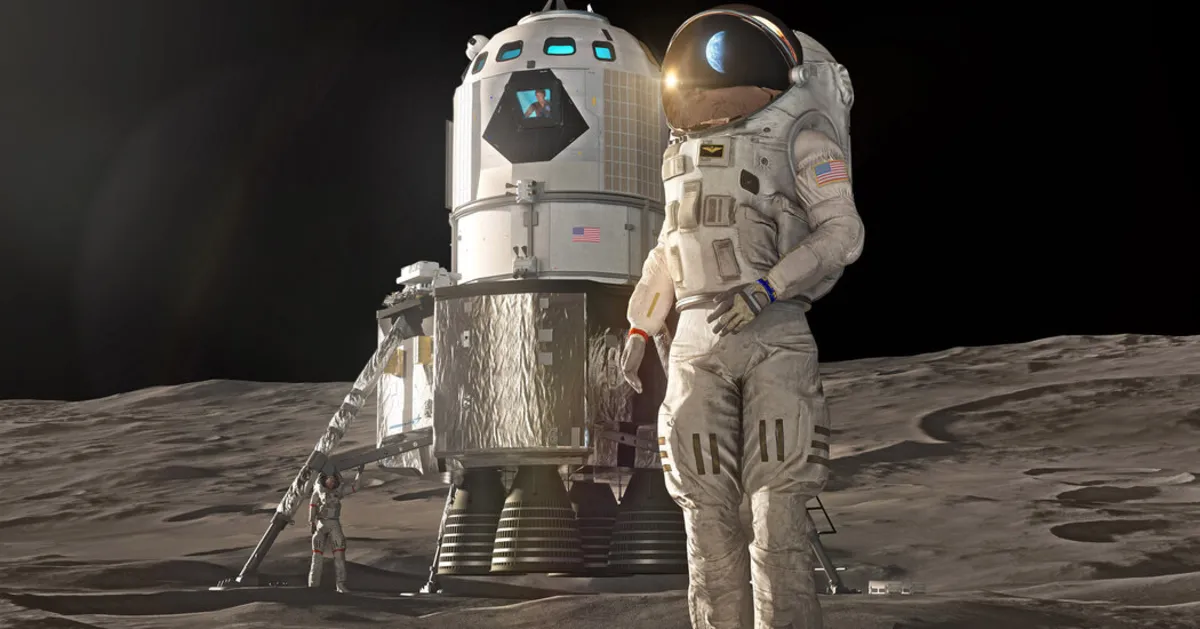
The acting administrator of NASA, Sean Duffy, announced on Monday that the agency is actively exploring a Plan B for transporting astronauts to the moon's surface due to significant delays from SpaceX, the rocket company founded by Elon Musk. In interviews with CNBC and Fox News, Duffy, who also serves as the secretary of transportation, indicated that NASA would open bidding for a new lunar lander contract to other companies, emphasizing the urgency of the mission.
Duffy expressed the need for NASA to accelerate its efforts to beat China, which has set a goal to land astronauts on the moon by 2030. “We’re not going to wait for one company,” Duffy stated during his appearance on CNBC’s “Squawk Box.” He emphasized, “We’re going to push this forward and win the second space race against the Chinese.” Additionally, he pointed out that President Trump has set a target for the moon landing to occur before January 20, 2029—the conclusion of his second presidential term. Achieving this timeline would require the rapid development and construction of a new lunar lander within a span of less than three and a half years, potentially adding billions to NASA's existing budget.
Among the companies under consideration, Duffy mentioned Blue Origin, the space venture owned by Jeff Bezos, as a viable candidate. Blue Origin is currently developing a lunar lander for NASA under a $3.4 billion contract for the Artemis V mission, which is not scheduled until the 2030s. Other companies, including Lockheed Martin, may also compete for the lunar mission contract.
In response to Duffy's comments, Elon Musk took to social media platform X to assert that SpaceX is making faster progress than its competitors. “SpaceX is moving like lightning compared to the rest of the space industry,” Musk tweeted, adding, “Mark my words, Starship will end up doing the whole Moon mission.” Furthermore, he criticized Blue Origin, stating that the company has yet to deliver a payload to orbit, let alone to the Moon. Musk later clarified that Blue Origin had launched a test spacecraft into orbit in January, but he emphasized that it did not qualify as a “useful payload.”
SpaceX was awarded a $2.9 billion contract to provide the lunar lander for Artemis III, a crucial NASA mission set to land astronauts on the moon's south polar region by mid-2027. However, many experts doubt that NASA will meet this timeline. SpaceX plans to utilize its massive Starship rocket, which is as tall as a 17-story building, for the mission. However, the complexity of this vehicle, which is primarily designed for Mars colonization, raises concerns about its suitability for a lunar mission involving two astronauts.
Jim Bridenstine, the former NASA administrator during Trump's first term, highlighted the challenges posed by the Starship architecture, stating, “It doesn’t make a lot of sense if you’re trying to go first to the moon this time to beat China.” SpaceX has encountered setbacks with three consecutive test flight failures this year. Although recent test flights have shown promise, further launches are on hold until next year when an upgraded version of the rocket is expected to be ready. Additionally, SpaceX must demonstrate the capability to refuel the Starship in orbit before it can attempt a moon landing without astronauts.
Mr. Duffy confirmed during an interview that NASA is in the process of opening the lunar lander contract to other companies. “I think we’ll see companies like Blue get involved, and maybe others,” he mentioned on “Fox & Friends.” His statement indicates that a competitive environment is emerging, with American companies racing to see who can successfully return astronauts to the moon first.
In a statement, Bethany Stevens, NASA's press secretary, revealed that the agency plans to issue a “request for information” from the commercial space industry to explore ways to enhance the cadence of lunar missions. Douglas Cooke, a former high-ranking NASA official advocating for a new lander, supported this initiative, stating, “They need to get a start on the lander that will have a chance of getting there.”
In the limited timeframe before January 2029, developing a new lunar lander is feasible, but it will require leveraging existing technologies rather than starting from scratch. Douglas Loverro, who briefly served as NASA’s associate administrator for human exploration and operations, emphasized the importance of using pre-existing technologies to construct a lander in under five years. “Anything you use has to already exist,” he explained.
Officials at Lockheed Martin have confirmed that they are collaborating with other aerospace companies on an alternative lunar lander design. Rob Chambers, director of human spaceflight strategy at Lockheed Martin, elaborated that the design would utilize existing hardware and components, likening the process to a scene from the movie “Apollo 13,” where engineers had to improvise solutions from limited resources. The proposed lander would be more compact than current designs from SpaceX and Blue Origin, featuring a two-stage spacecraft reminiscent of the Apollo missions, but on a larger scale.
As NASA navigates these challenges and opportunities, it remains clear that the race to the moon is intensifying, with various companies vying for contracts and innovative solutions to propel humanity's next lunar adventure.